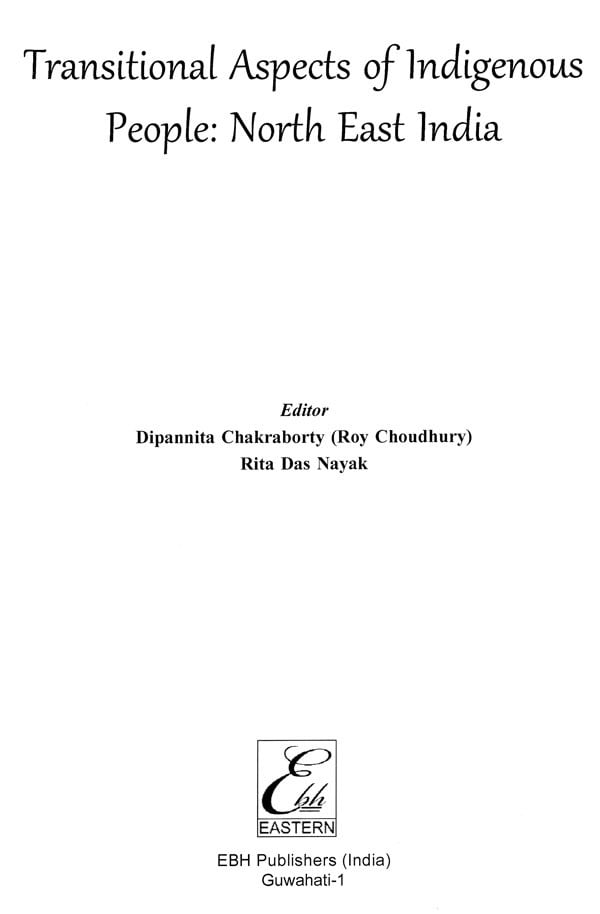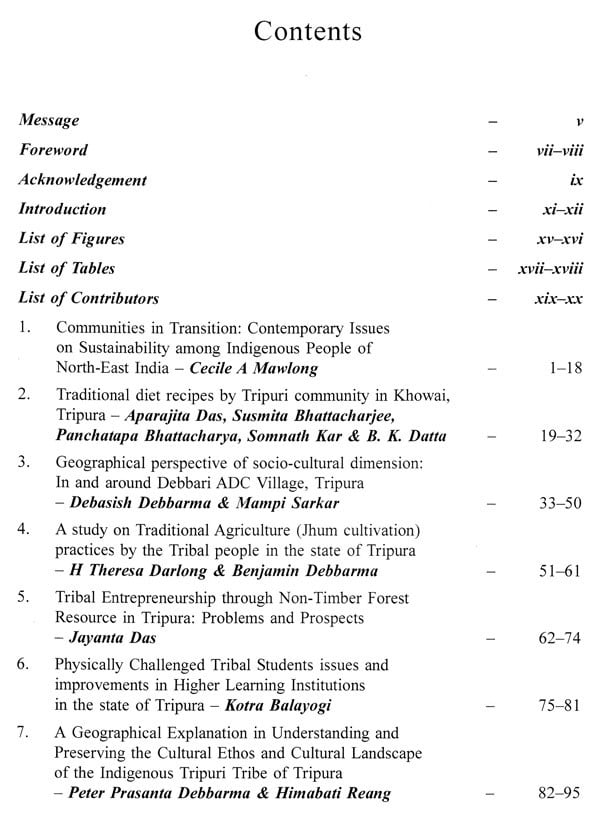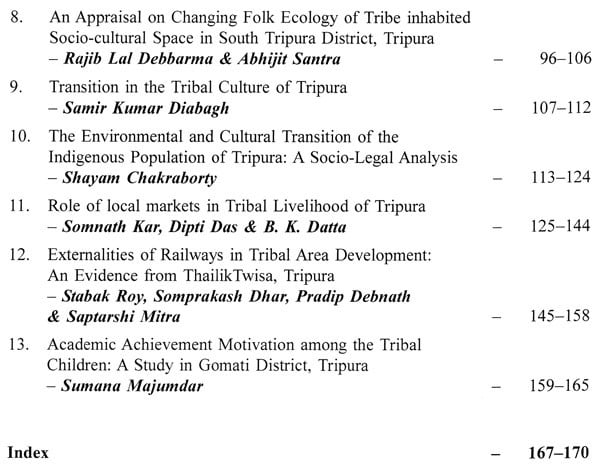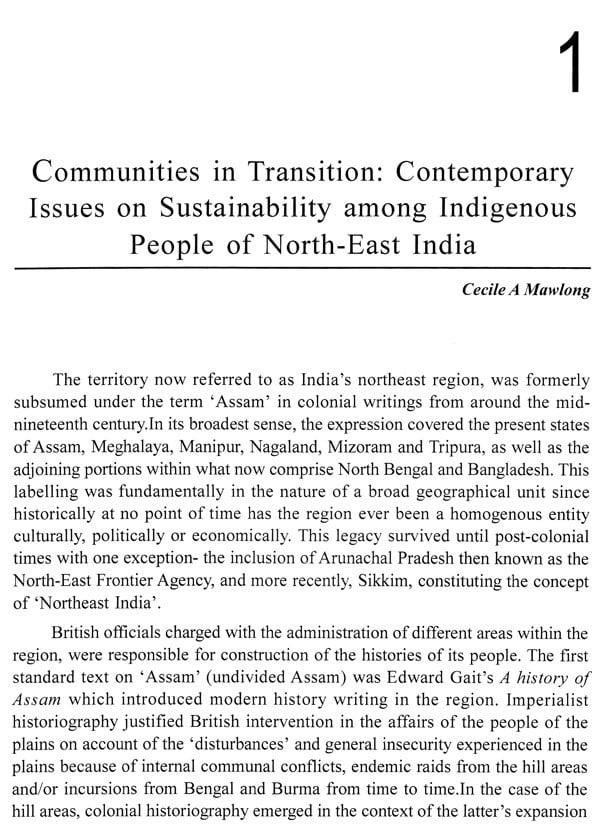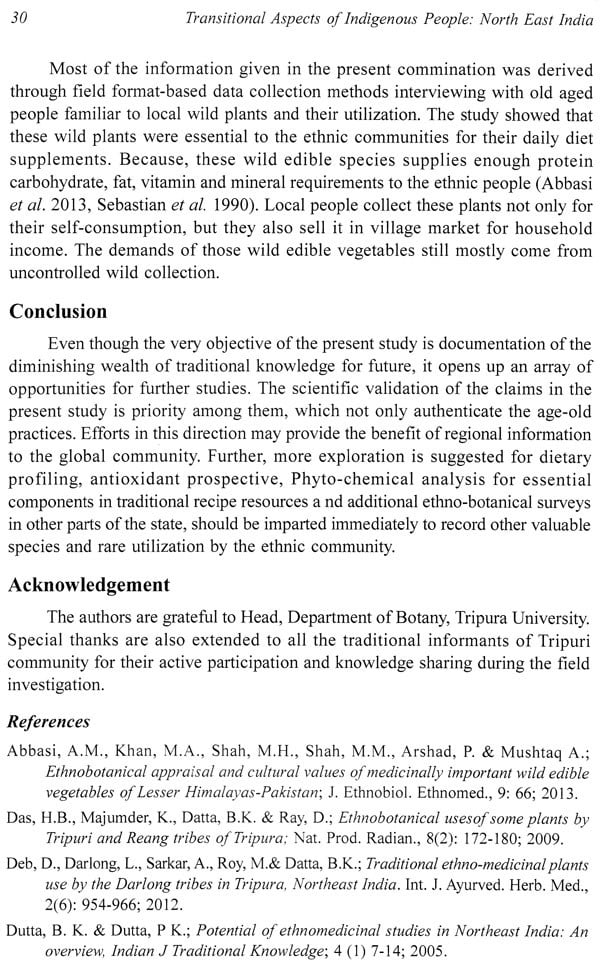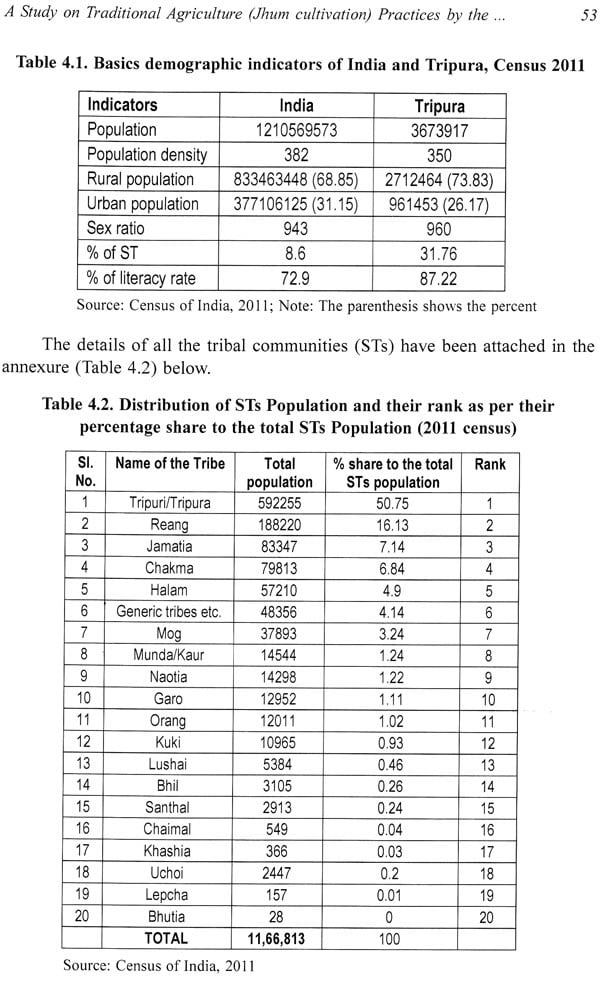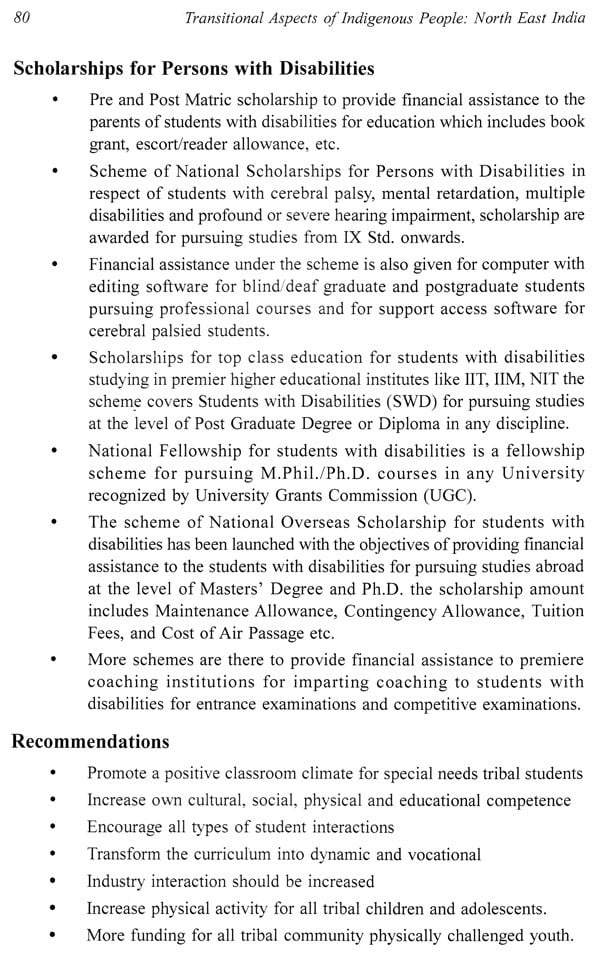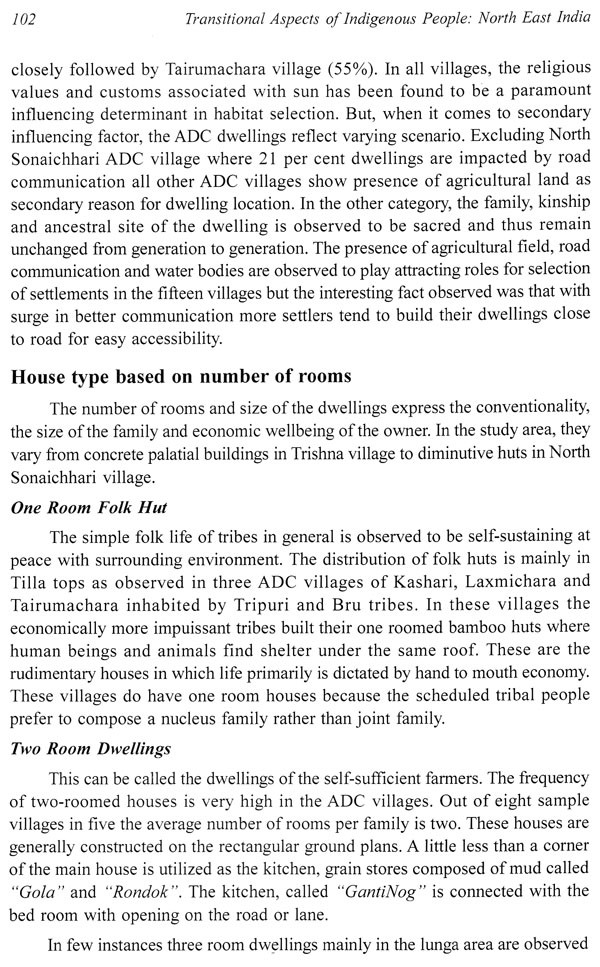
Transitional Aspects of Indigenous People: North East India
Book Specification
| Item Code: | UAW006 |
| Author: | Dipannita Chakraborty and Rita Das Nayak |
| Publisher: | EBH Publishers, Guwahati |
| Language: | English |
| Edition: | 2022 |
| ISBN: | 9789392038419 |
| Pages: | 188 (Throughout B/W Illustrations) |
| Cover: | HARDCOVER |
| Other Details | 9.50 X 6.00 inch |
| Weight | 450 gm |
Book Description
The North-East India is a piece of pluralities and comprises of multiplicity of culture, language and traditions inhabited by indigenous people. The aborigines belong to different ethnic stocks and has been living a secluded life in isolation from each other in all respects since time immemorial. For the last few decades large scale immigration into their mode of life have brought fissures in their traditional mode of life affecting their society and culture. Now a radical change is taking place among them as they are passing through a period of transition. With the intention to capture this change, various researchers evaluate different aspects of transition in their scholarly papers, which will enrich and widen the horizon of knowledge.
Dr. Dipannita Chakraborty (Roy Choudhury) is a reputed academician and has more than 34 years of teaching and academic experience. Her area of research interest is economic history of North East India. She has authored a good number of academic books and research papers, conducted research project and presented research papers in seminars and conferences. Presently she is Principal of Government Degree Colleges under Government of Tripura. She is also member of Higher Education Council of Tripura and Vice President of Tripura Board of Secondary Education. She is Peer Team member of National Assessment and Accreditation Council, Bangalore. She is closely associated with Higher Education sector in various capacities.
Former Associate Professor cum Principal-in-charge, Netaji Subhas Mahavidyalaya, Tripura. She was also the Head of the Department of Geography of Women's College, Agartala. Meanwhile She served in M.B.8 College in Agartala as Associate Professor and Head of the Department. She was in teaching profession in various colleges of Tripura over three decades. She also taught in post-Graduation level in Tripura University and College of Fisheries as Guest Faculty for several years. Throughout the academic career she secured first class and did her M.Phil. from Delhi School of Economics and conferred Ph.D. from Calcutta University. Her specialization is in Geology and Environmental Geography. She has published several articles in various issues of research journals. She is the author of 'Bhugol Parichay' of Secondary level under the Tripura Board of Secondary Education. She is the member of different academic bodies of the country and other reputed organizations.
The indigenous people generally practice their traditional way of life, in terms of their customs, beliefs, language, food which were handed down to them through generations. They follow a unique practice of retaining their inherited socio-economic cultural-religious-political traits, which are shaped by the culture of surrounding locales and are distinct from those around them. They have long asserted the right to determine their own development without any discrimination. The history of tribal identity has encountered and seen a number of changes as well as challenges. Since Independence there has been large scale 'culture contact' between the indigenous people and the mainstream society which has resulted in acculturation. Their interaction is to be seen as a socio-cultural process, sometimes cooperative sometimes competitive.
Man, over the years has learnt to judge of things past, to improve upon things present and foresee things to come, so that he may know what to follow and what to avoid. With the rise of interconnectedness, intrusion of commercialization, widespread urbanization, increasing participation in a more generalized culture, retention of separate identity by the indigenous people became a concern for the society. These external forces as well as their contact with the outside world brought about a sea change in their ways of living, gave a new interpretation to the beliefs and customs as they adapted to new institutions. And this led to transition which occurred through diffusion, modernization and acculturation and this has gained momentum in the present times. One needs to keep in mind that change is the law of nature, change is inevitable, to exist is to change, to change is to advance and make progress, even the most conservative culture has to change, undergo transition to survive in the contemporary world. Thus, the change is the only unchanging aspect of society and constant change is among the most permanent features of our society. Social change is such a general term that it has been used to refer to almost any kind of change, time has come to realize the relevance of these social dynamics and the transition taking place for analyzing the present status of indigenous communities to explore deep into its ever widening scope and significance.
Tribes are the indigenous or autochthonous population. The aborigines do not form a uniform race, they belong to different ethnics' stocks. Man had begun everywhere as a hunter, had later learnt to domestic some of his game animals and so became a pastoralist, and finally rose to the stage of agriculture. Between physical environment and human activity there is always a middle term a collection of specific objectives and values, a 'cultural pattern'. It is not a static, it is modifiable in relation to environmental condition.
In the post-independence period, there has been a great deal of cultural contact between tribal people and mainstream society, leading to acculturation, displacement and other related changes among the tribes. This is broadly referred to as transition.
The north eastern part of India has historic links with Southwest China and Mon-Khmer group of people in Myanmar and Thailand. This region is marked with varying degree of cultural practices and religion. Since time immemorial they have led secluded life in isolation from each other in all respects. For the last few centuries large scale immigration into their territories have brought fissures in their traditional mode of life affecting their society and culture. Now, a change is taking place among the indigenous people of north east India as they are passing through a period of transition. Their tribal tradition is now losing its purity and originality and is either being dissolved into the main stream or being swallowed by non-tribal.
At this onset, an attempt has been made to evaluate the different aspects of transition of indigenous people of north-east India. Hence the title of the seminar has been oriented to give the essence of transitional aspects. The topic transitional aspects of indigenous people of north-east India: Contemporary issues on sustainability, encompasses the various sub-theme like tribal issues, and strategies of empowerment, social dynamics, tribal livelihood, a retrospect and prospects.
**Contents and Sample Pages**
